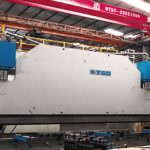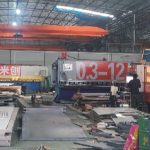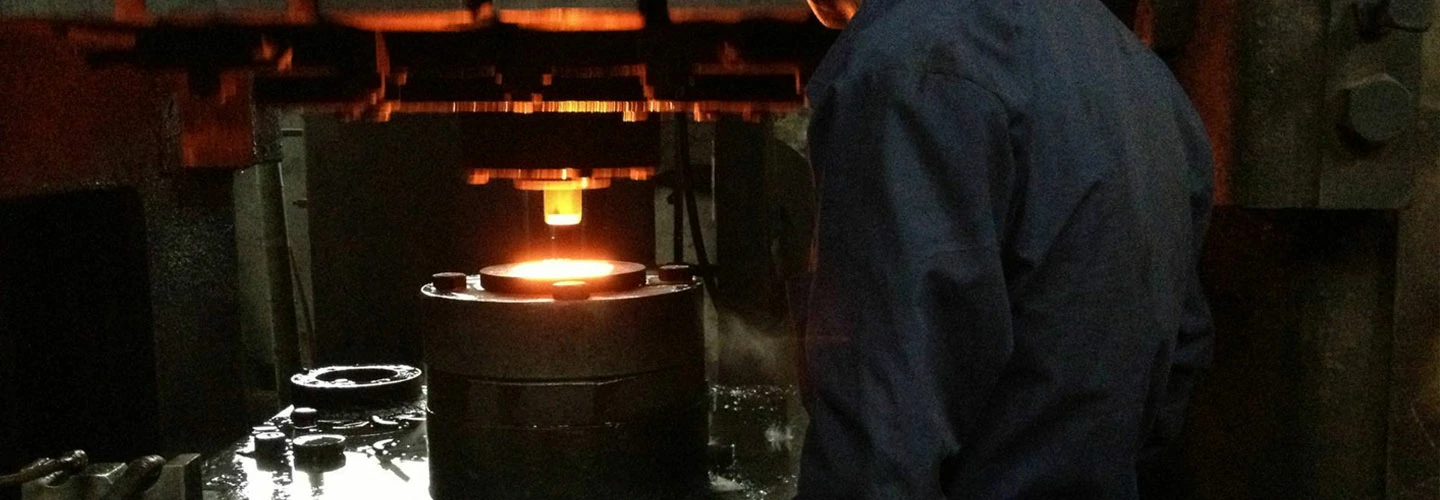
Ferritic Stainless Steel Forging
The hardness of pure chromium ferritic stainless steel does not increase significantly after quenching. During the forging process, the phenomenon of work hardening will occur, and the degree of work hardening will be different depending on the temperature and deformation. The cooling temperature requirements for this steel after forging are not strict.
The forgeable temperature range of ferritic stainless steel is very large, but its range is limited to a certain extent due to grain growth and fragile structure at higher temperatures. For 06O13A1 (405) section steel, the final forging temperature must be strictly controlled. The presence of a small amount of austenite in 06Crl3AK405) steel leads to fragile grain boundaries, which should be paid special attention. General ferritic steels are forged at temperatures below 704°C. For 16Cr25N (446) section steel, the temperature must be lower than 871 °C when the total reduction is 10%, so as to refine the grains and make the steel tough at room temperature. Ferritic stainless steels are best annealed after forging.
Ferritic stainless steel has better forging properties. Compared with austenitic stainless steel, ferritic steel has a higher recrystallization rate and lower recrystallization temperature, so the tendency of grain growth during plastic deformation is greater; the upper limit temperature of forging should be strictly limited, generally iron The initial forging temperature of solid stainless steel is 1040~1120℃. In order to obtain a fine-grained structure and prevent brittleness, the amount of deformation and the final forging temperature should be properly controlled. The minimum amount of deformation necessary to refine the grain depends on the temperature, about 5% at 700°C, and about 5% at 800-900°C. It is 10%~15%, the compression amount of the last forging should not be lower than 12%~20%, and the final forging temperature should not be higher than 800℃. In order to avoid cold work hardening due to too low temperature, the final forging temperature should not be lower than 705℃. The final forging temperature of the forging process formulated by a factory is 705~790℃.
Due to the poor thermal conductivity of ferritic stainless steel, when the surface defects are cleaned with a grinding wheel, local overheating can cause cracks, and it is necessary to use an air shovel to clean or peel the surface defects.
Ferritic stainless steel does not undergo phase transformation when heated and cooled within a certain temperature range, so it cannot be strengthened by heat treatment. The purpose of its heat treatment is to eliminate the internal stress generated during cold deformation processing and welding and improve the processing performance; secondly, to eliminate the segregation produced by the casting during solidification through heat treatment, and obtain a single and uniform ferrite structure. , as well as eliminating phase transition products and 475°C brittleness formed during welding.
The Characteristics Of Ferritic Stainless Steel Forging
- The recrystallization temperature of ferritic stainless steel is lower and the speed is faster, so the tendency of grain growth during plastic deformation is greater. Ferritic stainless steel grows faster at 950X: above.
- The forging performance of ferritic stainless steel is limited by grain growth and microstructure weakening. For example, for American 405 steel (similar to 06Crl3Al), the appearance of a small amount of austenite will lead to the weakening of grain boundaries, so the final forging temperature should be strictly controlled.
- In order to obtain fine grain structure, the compression amount of the last forging should not be lower than 12%~20%, and the final forging temperature should not be higher than 800℃. In order to avoid cold work hardening due to too low temperature, the final forging temperature should not be lower than 705℃.
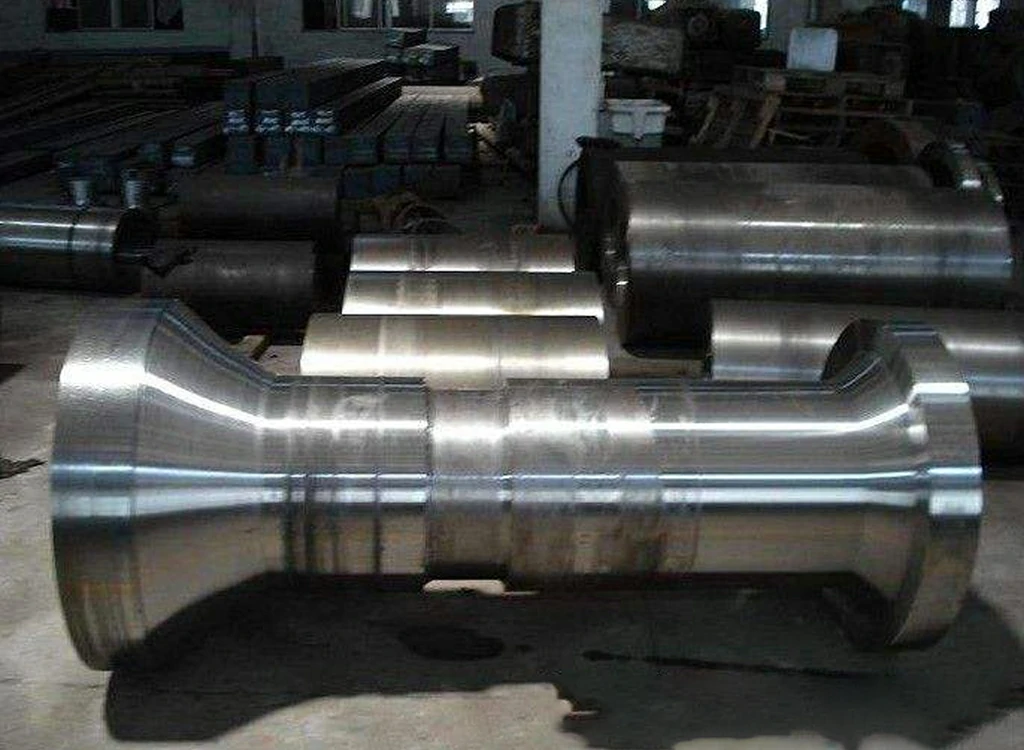
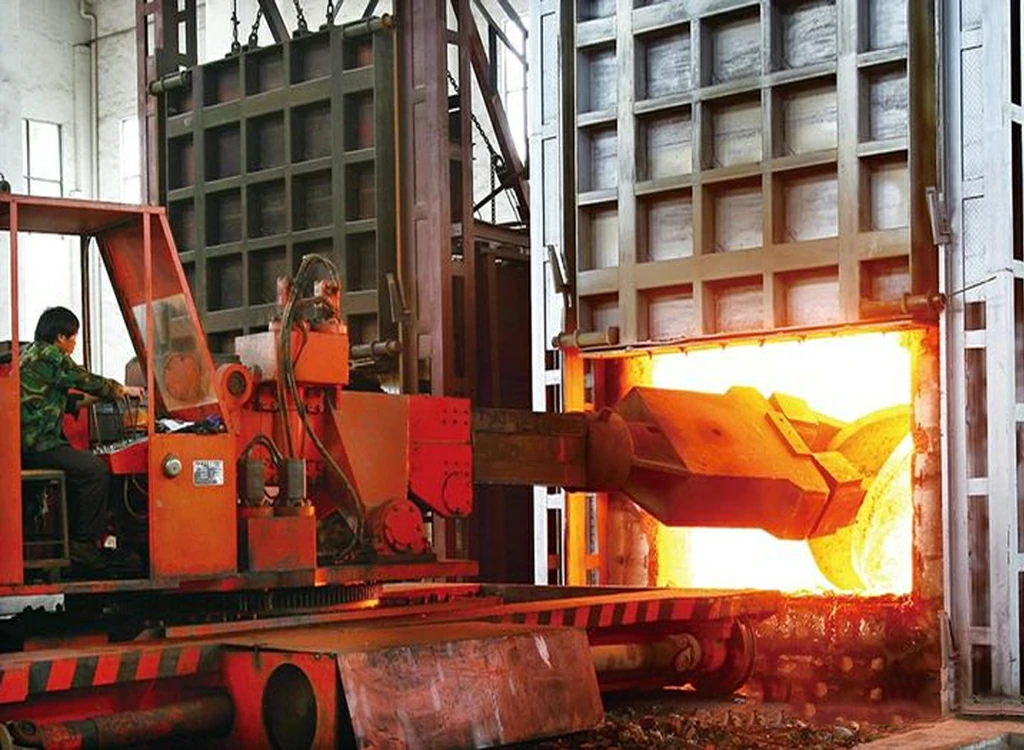
The Temperature Range Of Ferritic Stainless Steel Forging
- The initial forging temperature of ferritic stainless steel should not be too high, it should be lower than 1200℃, especially the heating of the last fire of the blank should not exceed 1120℃;
- The final forging temperature of ferritic stainless steel is usually set at 720~800℃ in production, and it is not allowed to be higher than 800℃;
- The grain growth tendency of ferrite is larger than that of austenite.
With custom-machined dies and a cost-effective forging process that reduces post-processing, Our forging company strives to produce products that not only last longer but are engineered for maximum strength and quality. Contact us today for more details.

